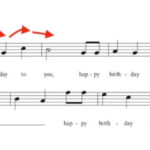“Aloha Oe,” a melody that resonates with bittersweet emotion, is more than just a tune; it’s a poignant piece of Hawaiian history and culture. While frequently heard, especially in Hawaii, the depth and origins of this iconic song are often overlooked. This article delves into the true story behind “Aloha Oe,” exploring its creation, global journey, and enduring legacy.
Many believe “Aloha Oe” to be a simple farewell song, but its narrative is intertwined with royalty, romance, and the changing tides of Hawaiian history. Even those familiar with the melody often lack a complete understanding of its rich background. Interviews conducted on a university campus in Hawaii revealed a common familiarity with the song, yet a gap in knowledge regarding its precise origins. One music student correctly identified Queen Liliuokalani as the composer and understood its connection to a sense of loss for Hawaii’s past. Another student associated the song with the queen’s imprisonment and a farewell to the Hawaiian people. A third recognized its sad tone, highlighting a general awareness of its emotional depth, even without specific historical context.
The definitive account of “Aloha Oe” is meticulously detailed in Leslie Ann Hayashi’s book, “Aloha ‘Oe: The Song Heard Around the World,” a valuable resource found in the Pacific Islands room of the Joseph F. Smith Library. This book clarifies the true genesis of the song, dispelling common misconceptions.
Contrary to popular belief, Queen Liliuokalani composed “Aloha Oe” not during her confinement, but in 1878, many years prior to the political upheaval that marked the end of the Hawaiian monarchy. The inspiration struck her during a horseback ride from Maunawili Ranch, nestled against the lush Ko’olau Mountains on Oahu’s windward coast. Legend recounts that the queen, then Princess Lili’uokalani, witnessed a touching farewell between Colonel James Harbottle Boyd and a young Hawaiian girl, a moment that sparked the lyrical and emotional core of “Aloha Oe.” As she journeyed back to Honolulu, the melody and verses blossomed in her mind, culminating in the complete song upon her arrival home. This origin story paints a picture of romance and heartfelt parting, far removed from the later association with political tragedy.
“Aloha Oe” transcended the shores of Hawaii just five years later. In August 1883, it made its debut in San Francisco, captivating audiences and initiating its global ascent. Within a year, the song’s sheet music was disseminated worldwide, its melancholic beauty echoing from German harbors to the majestic Swiss Alps. “Aloha Oe” became synonymous with both arrival and departure in Honolulu Harbor, played as ships sailed in and out, embodying a bittersweet farewell that resonated deeply with the era’s sentiments and the monarchy’s eventual decline.
When Princess Lydia ascended the throne as Queen Lili’uokalani in 1891, “Aloha Oe” gained even greater significance, inextricably linked to the queen and her reign. The misconception that the song was composed during her arrest and trial for treason in 1895 is understandable, given its themes of farewell and sorrow. While Queen Lili’uokalani did yield the monarchy to the American government under duress, she never relinquished her fight for its restoration. Her subsequent confinement further cemented the song’s association with loss and the poignant farewell to a way of life.
The cultural impact of “Aloha Oe” extends far beyond its historical context. It has been immortalized and referenced across various forms of media, from literature and plays to movies and cartoons. Notably, its presence in Disney’s “Lilo and Stitch” introduced the song to a new generation, while Elvis Presley’s rendition further solidified its place in popular music history. These diverse adaptations demonstrate the enduring appeal and universal themes of “Aloha Oe,” a testament to its power as a song of farewell, love, and remembrance. “Aloha Oe” remains a vital piece of Hawaiian cultural heritage, its story as compelling and moving as its melody.


